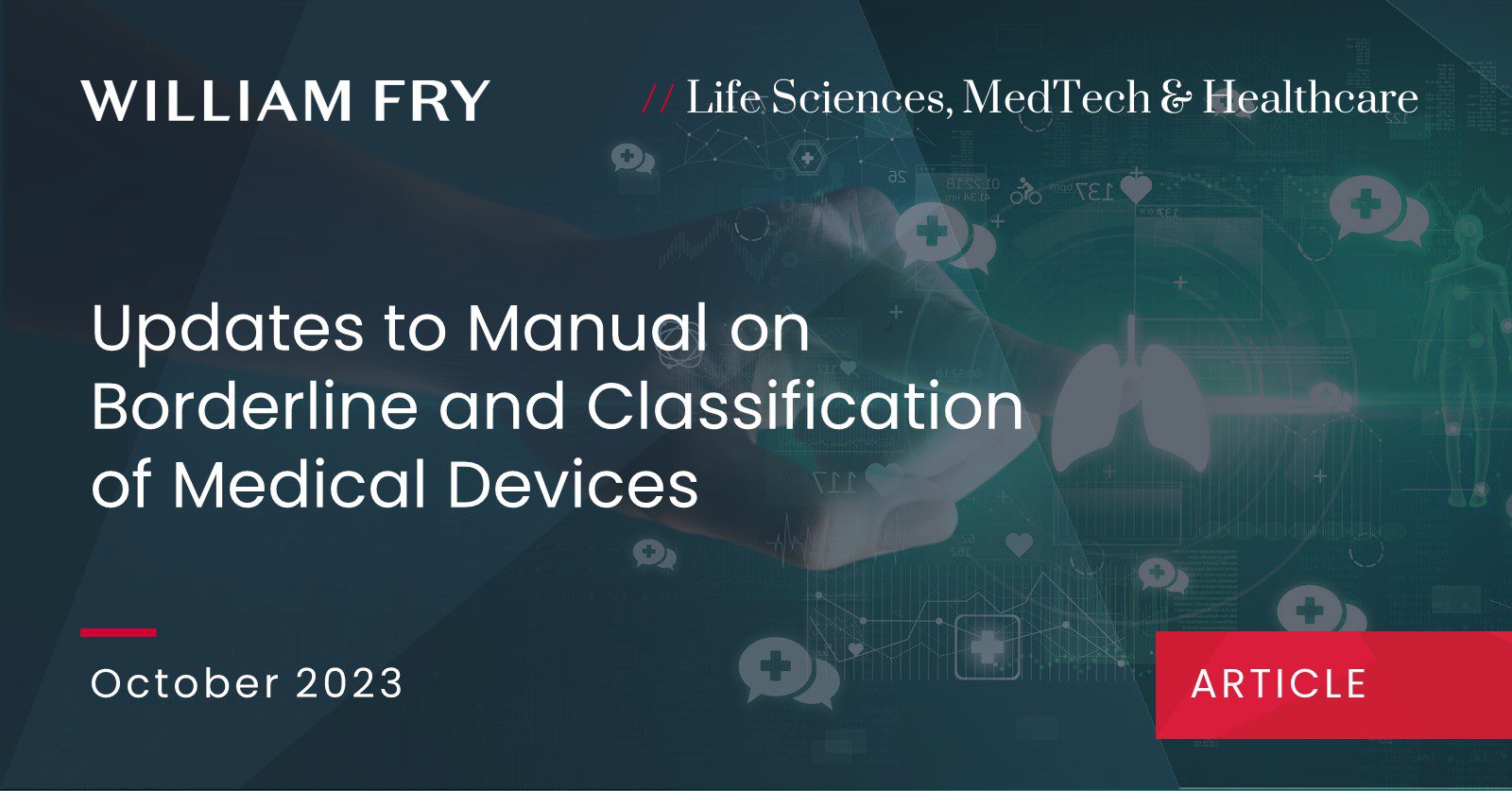On 27 September 2023, the Medical Device Coordination Group (MDCG) released an update to its manual on borderline and classification of medical devices under Regulation (EU) 2017/745 relating to medical devices and Regulation (EU) 2017/746 in respect of in vitro diagnostic medical devices.
The updated manual reports and explains the basis of the decisions of the Borderline and Classification Working Group (BCWF) relating to the classification of the following products:
- Root canal irrigation solutions containing sodium hypochlorite (NaOCl) or chlorhexidine digluconate (CHX) are to be classified as class III medical devices unless the manufacturer can provide robust scientific evidence that the NaOCI and CHX in these solutions have no antiseptic or antibacterial purposes in or on the human body or its constituents.
- Temperature sensors embedded in orthopaedic devices for patient compliance tracking are not to be regarded as an accessory to a medical device, nor should they be regarded as a medical device on its own.
- A system intended to produce sclerosing foam is not to be classified as a medical device, however, if the manufacturer of such a system included in it a CE-marked syringe which is intended to dispense the foam, the system would meet the definition of a procedure pack.
- n-butyl-2-cyanoacrylate (nBCA) based adhesives, intended for the permanent endovascular closure of the great saphenous vein and associated varicosities, are to be classified as class III medical devices.
- Custom-made cranial implants, intended as a replacement for parts of the skull, are to be classified as class III medical devices.
Conclusion
For more details, please contact Margaret Muldowney, Mary Cooney or your usual William Fry contact.
Contributed by Joanne Poland
Recommended Insights
Article and Insights
6
Nov 2024
The Central Bank of Ireland published its latest quarterly Insurance Newsletter in...

Partner
Eoin Caulfield
Article and Insights
5
Apr 2024
The Central Bank of Ireland published its Insurance Industry newsletter for Q1 202...

Partner
Ian Murray
Article and Insights
21
Dec 2023
With new laws affecting medical devices on the horizon, we discuss changes to the ...

Partner
Charleen O’Keeffe
Article and Insights
8
Sep 2023
Listen to our Legal News Podcast where our knowledge lawyers discuss some interest...

Consultant
Julie Murray
Article and Insights
3
Aug 2023
Listen to our Legal News Podcast where our knowledge lawyers discuss legal develop...

Consultant
Julie Murray
Article and Insights
5
Oct 2022
Welcome to the October 2022 edition of Legal News, a selection of our recent publi...
Article and Insights
26
Sep 2022
The European Commission has proposed reclassifying certain beauty and brain stimul...

Partner
Mary Cooney
Article and Insights
19
Jul 2022
Recent updates to European crowdfunding legislation include: (i) measures extendin...

Partner
Shane Kelleher
Article and Insights
4
Jul 2022
With robotic surgery now capable of being performed on a patient in one part of th...

Partner
Mary Cooney
Article and Insights
30
Jun 2022
Artificial Intelligence (AI) is becoming an increasingly pervasive general-purpose...

Partner
Charleen O’Keeffe
prev
next


